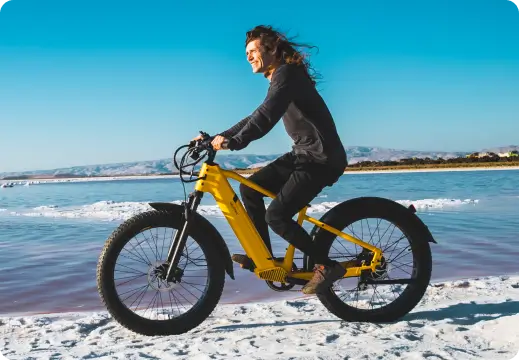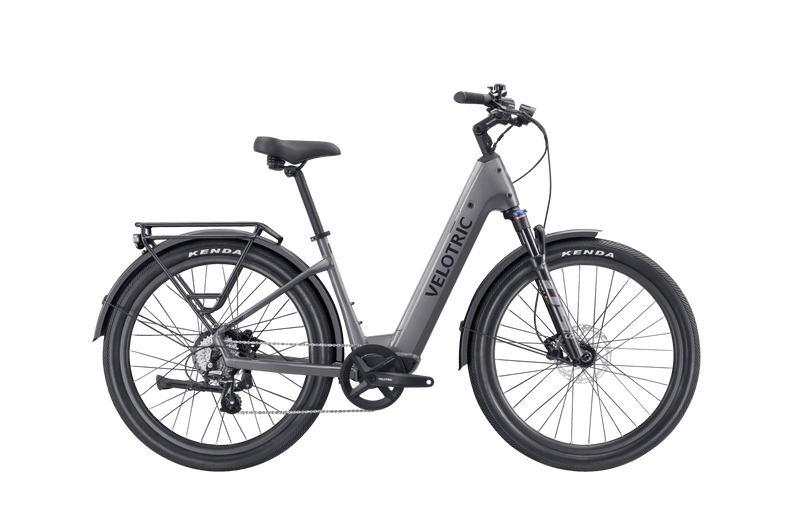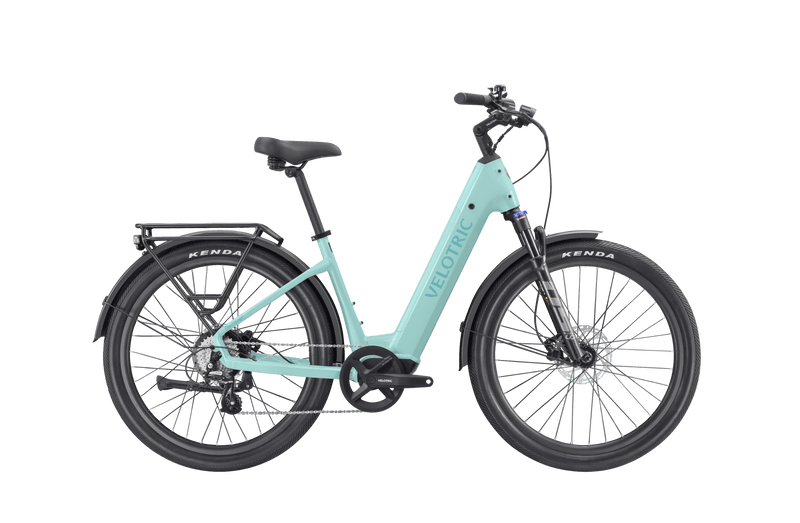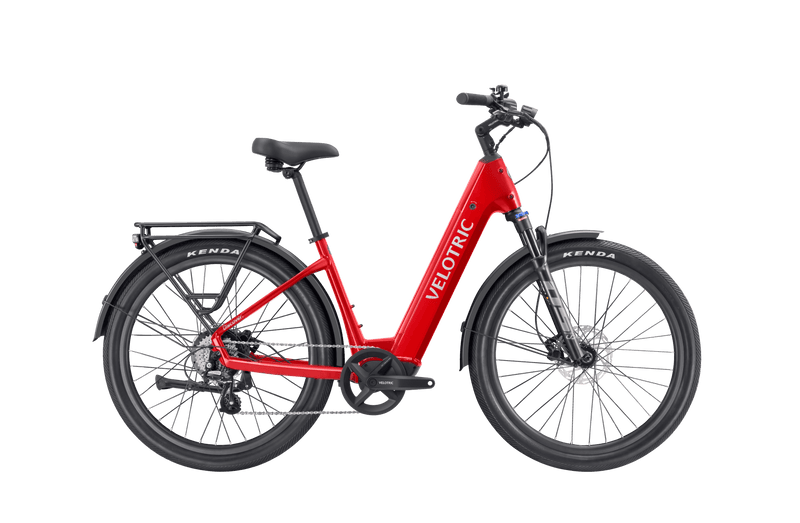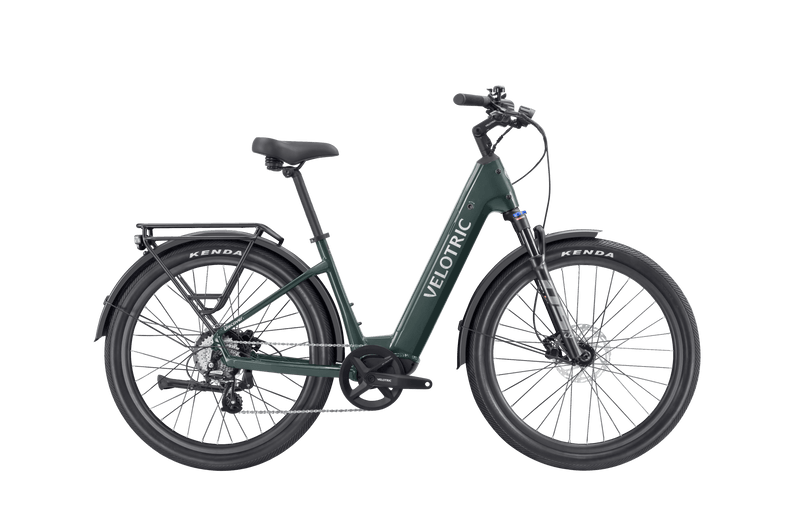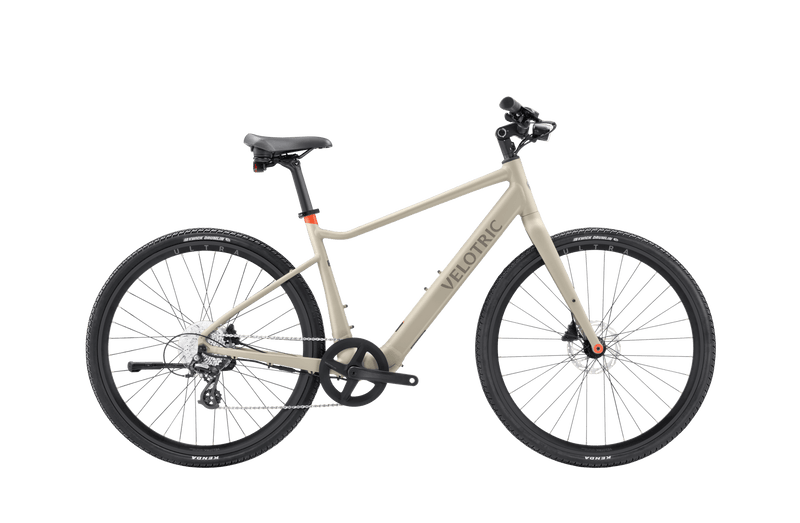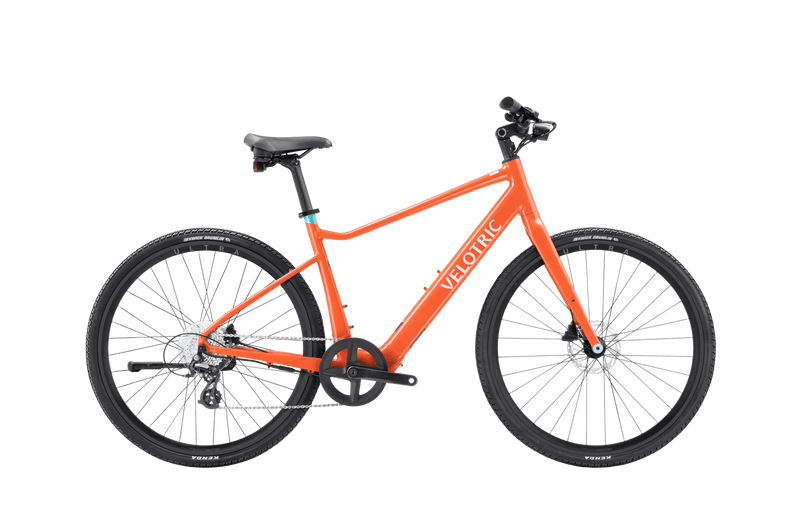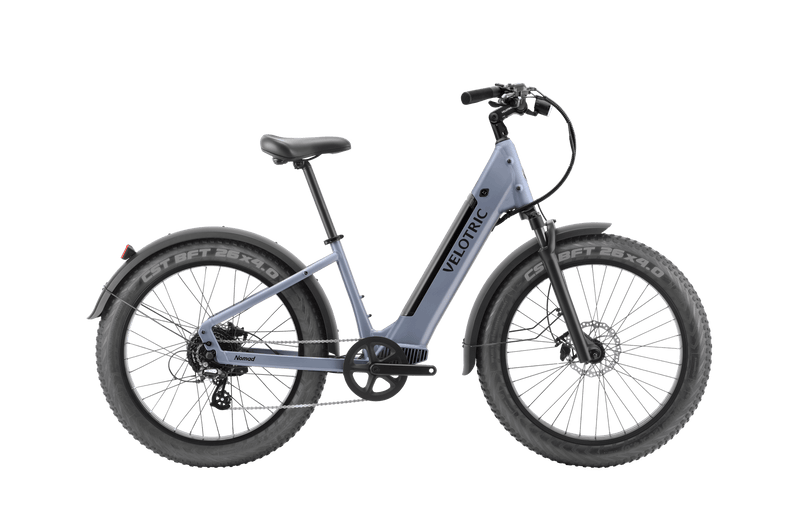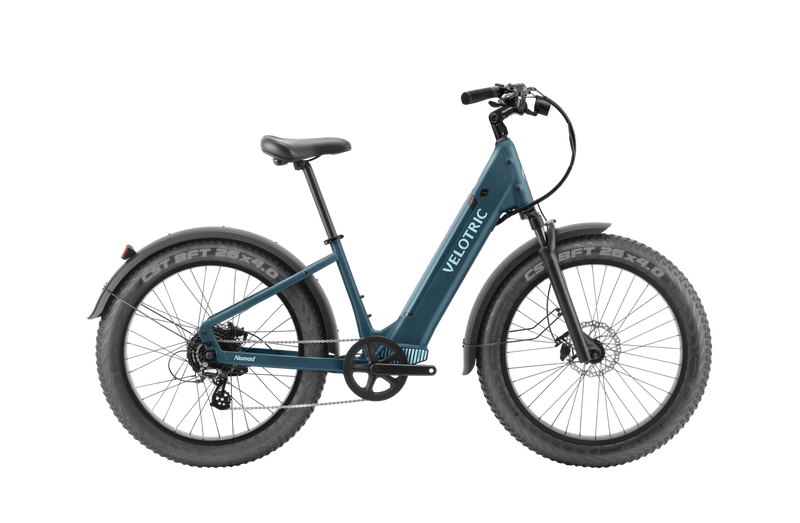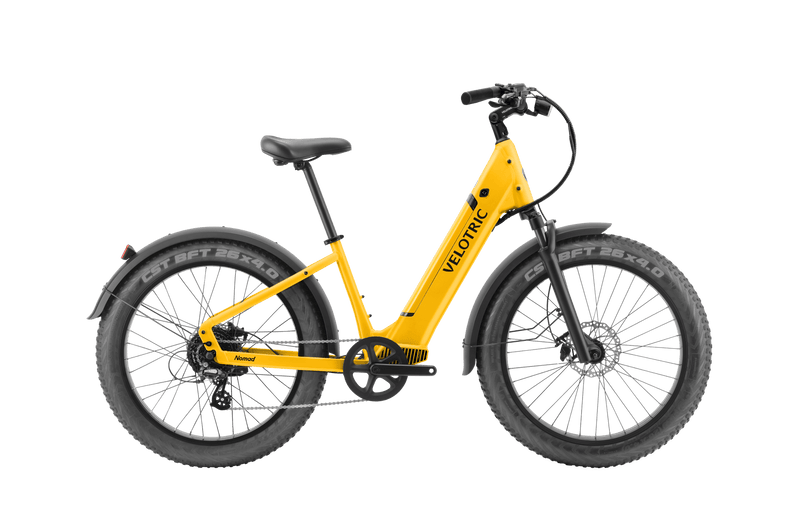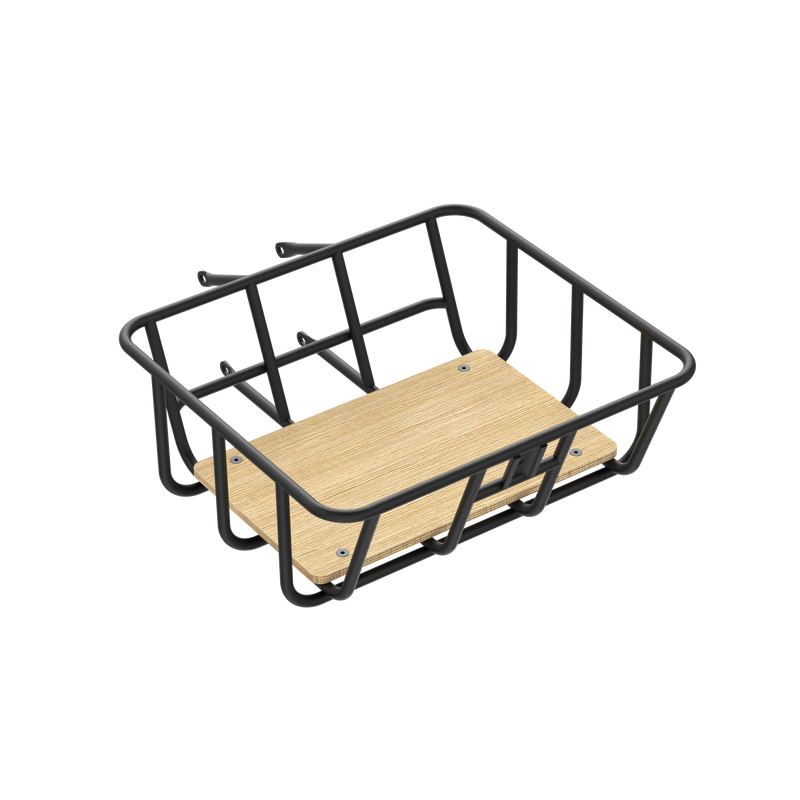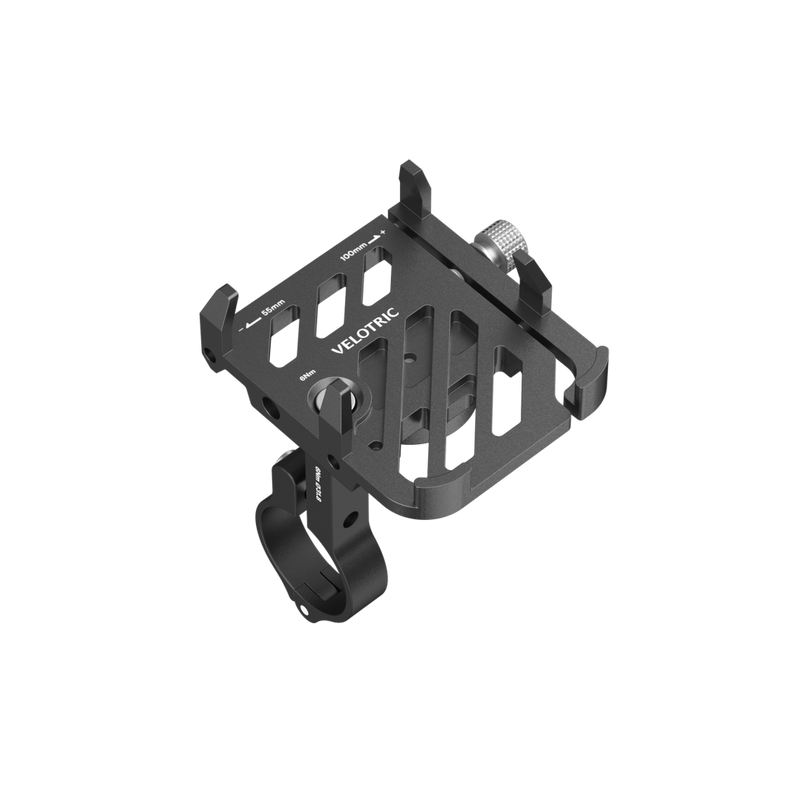Electric bikes operate much like traditional bicycles, with two pedals spinning two wheels to propel the bike forward. But an e-bike has one major asset a standard bike lacks: an electric motor.
The e-bike motor works alongside you, helping to propel the bicycle forward while you’re pedaling, a function known as pedal assist. Some e-bikes also have throttle assist, propelling the bicycle forward even when you’re not pedaling.
With the help of pedal assist and throttle assist, you can ride faster and farther. E-bikes are great for commuting to work, exercising, and exploring the great outdoors.
There are hundreds of e-bikes to choose from, and you want to be confident that the e-bike you pick is perfectly suited to your unique needs. To help you find the right e-bike, this guide will explain the different types of e-bikes and what to consider when choosing one.
Benefits of owning an e-bike
E-bikes continue to rise in popularity, with e-bike sales even outpacing electric vehicle sales in recent years. What’s all the buzz about? Here are some of the reasons people are buying e-bikes (and why you might want to get one too):
- Eco-friendly. E-bikes are an environmentally conscious alternative to cars. E-bike motors don’t require gas; instead, they’re powered by a rechargeable, removable battery. E-bikes also run quietly, so they don’t contribute to noise pollution like cars. They’re basically as eco-friendly as a traditional bicycle.
- Healthy. The extra support e-cyclists get from pedal assist and throttle assist encourages regular cycling. Engaging these support functions when you’re tired allows you to ride long distances and can inspire you to get on your bike more frequently than you might otherwise. Electric bikes are also more accessible, making them a great choice for seniors and those with chronic knee pain.
- Cost-efficient. E-bikes are significantly cheaper than cars. While pricier than a regular bike, you can find a quality electric bike for as little as $1,000. There are also tax credits that can save you money when buying an e-bike. Plus, since e-bikes don’t require fuel, you’ll save lots of money on gas.
- Versatile. E-bikes are a versatile mode of transportation for all kinds of purposes, whether you want to spend time in nature, bike to work, go off-roading, or participate in a road race.
Factors to consider before buying an e-bike
There are several factors to consider when buying your first e-bike, as well as lots of options for e-bike motors and electric batteries. Below, we detail the most important points to consider.
Type of e-bike
The first thing to consider when buying an e-bike is the type of bike. There’s no “one-size-fits-all” solution, as different e-bikes suit different types of cyclists. Here’s a quick rundown of the most popular types of bikes:
- Road e-bikes. Road bikes are designed with speed in mind. These are the bikes you see professional cyclists using in road races like the Tour de France, and usually feature slim tires and light frames. Similarly, road e-bikes have slim tires with minimal tread, which are meant to reduce friction on the road. While road e-bikes are great for speed, they aren’t ideal for all-weather riding as they easily skid out on slick surfaces.
- Commuter e-bikes. Commuter bikes like the Velotric Discover 1 are popular for those wanting to use their electric bike to get to work or school regularly. Commuter bike tires are fatter than road bike tires, offering greater stability but less speed.
- Mountain e-bikes. Mountain bikes are made for off-roading on unpaved surfaces, like sand, dirt, and gravel. They have wide tires with deep treads designed to grip uneven surfaces. They generally have a full suspension to accommodate rough terrain and may have additional features for hilly terrain.
- All terrain e-bikes. All-terrain e-bikes (ATBs) have fat tires with shallow treads to tackle a wide variety of surfaces from smooth roads to rugged terrain. However, they aren’t suited for hilly terrain like MTBs are. ATB e-bikes like Velotric’s Nomad can be ridden on both paved surfaces and unpaved surfaces—hence the name, all terrain.
- Folding e-bikes. Folding e-bikes are designed for electric bike enthusiasts who are low on space. Folding models are ideal for those using a combination of cycling and public transportation to commute and need to easily stow their e-bike on a bus or in a car.
Class of e-bike
Once you know which type of e-bike you want, it’s time to decide which class of e-bike will best suit your needs. Generally, e-bikes are divided into three classes, but some states have their own rules regarding e-bike classifications. Below are the standard industry guidelines:
- Class 1 e-bike. A class 1 e-bike has a motor that doesn’t exceed maximum speeds of 20 miles per hour (mph) and offers pedal assist but no throttle assist. Class 1 e-bikes are generally the most widely accepted and can be ridden on bike lanes, bike paths, and even sidewalks, depending on the municipality. They also have efficient motors. That said, they don’t offer as much assistance or speed as higher classes of e-bikes.
- Class 2 e-bike. A class 2 e-bike has both pedal assist and throttle assist and can reach speeds up to 20 mph with the motor engaged. Just as with a class 1 e-bike, the motor stops working once the bike exceeds this top speed. Class 2 e-bikes may have more legal limitations regarding where you can ride. For example, some national and state parks don’t allow class 2 e-bikes, because the throttle assist function can damage trails.
- Class 3 e-bike. These high-power bikes can go up to 28 mph. They are usually equipped with a speedometer to track speeds (which is mandatory in some jurisdictions). Class 3 e-bikes may have pedal assist alone or in addition to throttle assist. The biggest benefit of a class 3 e-bike is speed. However, class 3 e-bikes are usually more restricted and often have to be ridden on the road alongside other motor vehicles.
When deciding on the e-bike class, consider your purpose. For example, if you want a bike you can ride on traditional bike trails, a class 1 or class 2 e-bike is preferable. If, on the other hand, you need to commute to work quickly, a class 3 bike will offer more speed.
Before choosing your electric bike, read through Velotric’s overview of state e-bike laws. You can also find articles on individual state guidelines, including Florida, Pennsylvania, and New York.
Motor power
E-bike class is determined largely by motor power: how fast the motor goes and what functionality it supports (pedal assist versus throttle assist). When considering motor power, choose specs that will best meet your riding needs.
Motor power is designated by a two-number system: rated power/peak power. Rated power refers to the wattage the motor can sustain comfortably for an extended time. Peak power refers to the maximum wattage (which isn’t sustainable). The Velotric Discover 1 has a 500/900W rated/peak motor, while the Nomad 1 has a 750W rated motor.
E-bike motors are also installed in different locations. Mid-drive motors are located between the front wheel and rear wheel and assist pedaling through torque. Hub motors are located at the back of the bike and can assist pedaling through torque or directly by motor.
Battery capacity
Battery capacity is measured in watts or watt-hours. The more watt-hours the battery has, the more power it can hold. This means better battery life and longer range (the distance you can ride before the battery dies). Learn more about e-bike batteries.
Range
Your e-bike’s battery capacity, battery type, and bike weight will determine its range. If you plan on riding long distances, you’ll want an e-bike with a large capacity to ensure you don’t get stranded mid-ride.
Be careful when looking at electric bike range, as similar models can have different ranges. For example, the Discover 1 has a range of 65 miles, while the Nomad 1 has a range of 55 miles. Both bikes have the same 48V 14.4Ah lithium-ion battery, but the Nomad 1 is heavier to help it adapt to multiple terrains, draining the battery faster.
Comfort
The more comfortable you are on your e-bike, the more you’ll be able to enjoy it. Start by picking an e-bike frame that fits your body. Step-through frames are ideal for shorter individuals, while high-step frames suit taller riders with heights. Learn about frame types.
Once you’ve picked the frame, you still need to fit the bike to your body. Adjust the saddle height and handlebars to your height and riding style, and make refinements as you ride. Our guide to bike fitting explains how to properly adjust your bike to fit your body.
Another essential bike component that impacts comfort is the saddle. When picking an e-bike seat, consider width, shell material, and cover material. Synthetic materials are generally preferable since they’re easy to clean, low-maintenance, and light-weight.
Finally, the bike type can impact comfort too. New riders might prefer the stability of a fat-tire electric bike like the Velotric Nomad 1 over a slim-tire bike like the Discover 1.
Weight
Your e-bike’s weight will vary depending on details like the size and frame material. A lighter-weight model will work best if you need to carry your bike on public transportation or up and down stairs. On the other hand, a heavier bike will offer more durability for those who want to do more off-roading and distance rides.
The Velotric Discover 1, a commuter bike, weighs 65 pounds with a high-step frame and 63.5 pounds with a step-thru frame. The all-terrain Nomad 1 weighs 73 pounds with a high-step frame and 72 pounds with a step-thru frame.
Cost
E-bikes can cost about as much or as little as you want. High-end e-bikes run $6,000 or more, but there are plenty of high-quality budget-friendly e-bikes for far less. Velotric’s bikes range between $1,000 to $1,500.
When buying an e-bike, make sure to research possible tax credits. Many states, including Colorado and Connecticut, provide e-bike tax credits or rebate programs to encourage electric bike use. Even if there aren’t state-wide initiatives, some municipalities offer rebates; for example, Eugene, Oregon has a $300 e-bike incentive.
Maintenance and upkeep
An e-bike is an investment and you want to protect it accordingly. Your e-bike (like any traditional bike) will last the longest with regular cleaning and maintenance, including checking the tire pressure, tightening loose parts, and lubricating the bike chain. Some e-bikes, like electric mountain bikes (eMTB) require extra cleaning time after each bike ride to prevent rust.
Finally, remember to take your bike in for a professional tune-up every 1,000 miles.
How to test ride an e-bike
The easiest way to find the best electric bike for you is to go on test rides. Before going in for your test ride, prepare accordingly. Wear the appropriate cycling clothing depending on the season (this guide can help) and make sure you have a helmet. Note that helmets mandatory in some states.
You can search for e-bike retailers online. Velotric has a database of dealers you can check, with locations across the country. Book a test ride today.
Get your next e-bike from Velotric
E-bikes offer many benefits, including convenience, eco-friendliness, and exercise. There are e-bikes to suit every need, whether you want to go off-roading or simply need to get from A to B.
If it’s your first time getting an e-bike, trust Velotric to deliver exceptional quality. You can pick from the Discover 1 model, great for commuting, or the rough-and-ready Nomad 1. Our bikes feature top-quality frames that have been rigorously tested and a high-quality battery certified by Underwriters Laboratories (UL2271) safety organization. Additionally, our Discover 1 Step-Thru is already UL 2849 Certified while the Nomad 1 is currently undergoing the same certification. Both the Discover 1 and Nomad 1 come with pedal assist, throttle assist, and Shimano disc brakes. All Velotric electric bikes come with a one-year warranty.
Find your e-bike today.



































